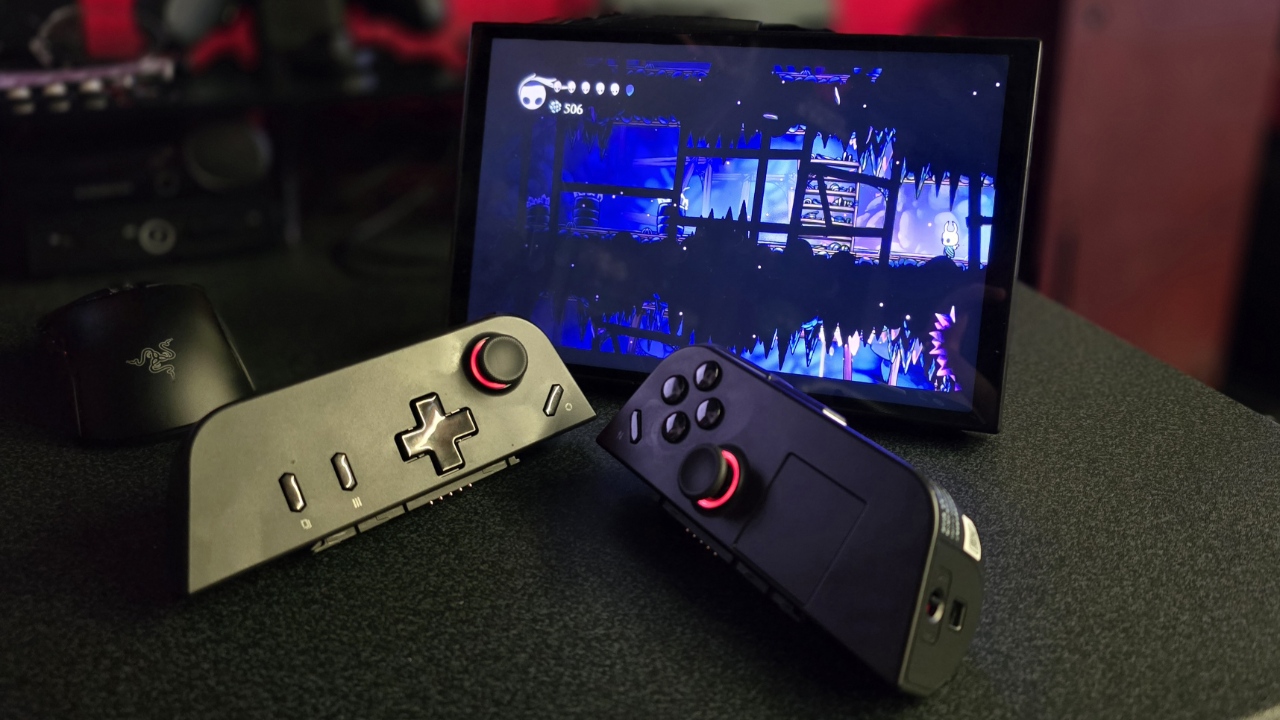
If you're an Xbox or PC gamer, you've likely been unable to escape the chatter around handhelds lately.
Whether it's the MSI Claw, Steam Deck, or ASUS ROG Ally, each device offers something unique to the overall PC gaming handheld landscape. Steam Deck's custom-designed OS is a usability champ, but the ROG Ally is a portable powerhouse with its Z1 Extreme chip, and superb lightweight design. Indeed, the ROG Ally has been my ally for several months. I went from being a pure sceptic to a true ASUS ROG Ally believer last summer. I have spent hundreds of hours with the ROG Ally, as a travel buddy and TV-sparing saviour, and did a six month ASUS ROG Ally review a few weeks ago, as a counterpart to our full-blown technical ASUS ROG Ally review. But now, I have a competitor to play with too.
Related: Lenovo Legion Go vs. ASUS ROG Ally
Say hi to the Lenovo Legion Go. We already have a full-blown Lenovo Legion Go review over here you should definitely read, which draws down into the nitty gritty and technical minutiae for those interested. This write up represents some more of my basic hands-on week one impressions, and some thoughts on whether you, dear Xbox or PC gamer, should consider grabbing it.
Bold, beautiful, bloody big
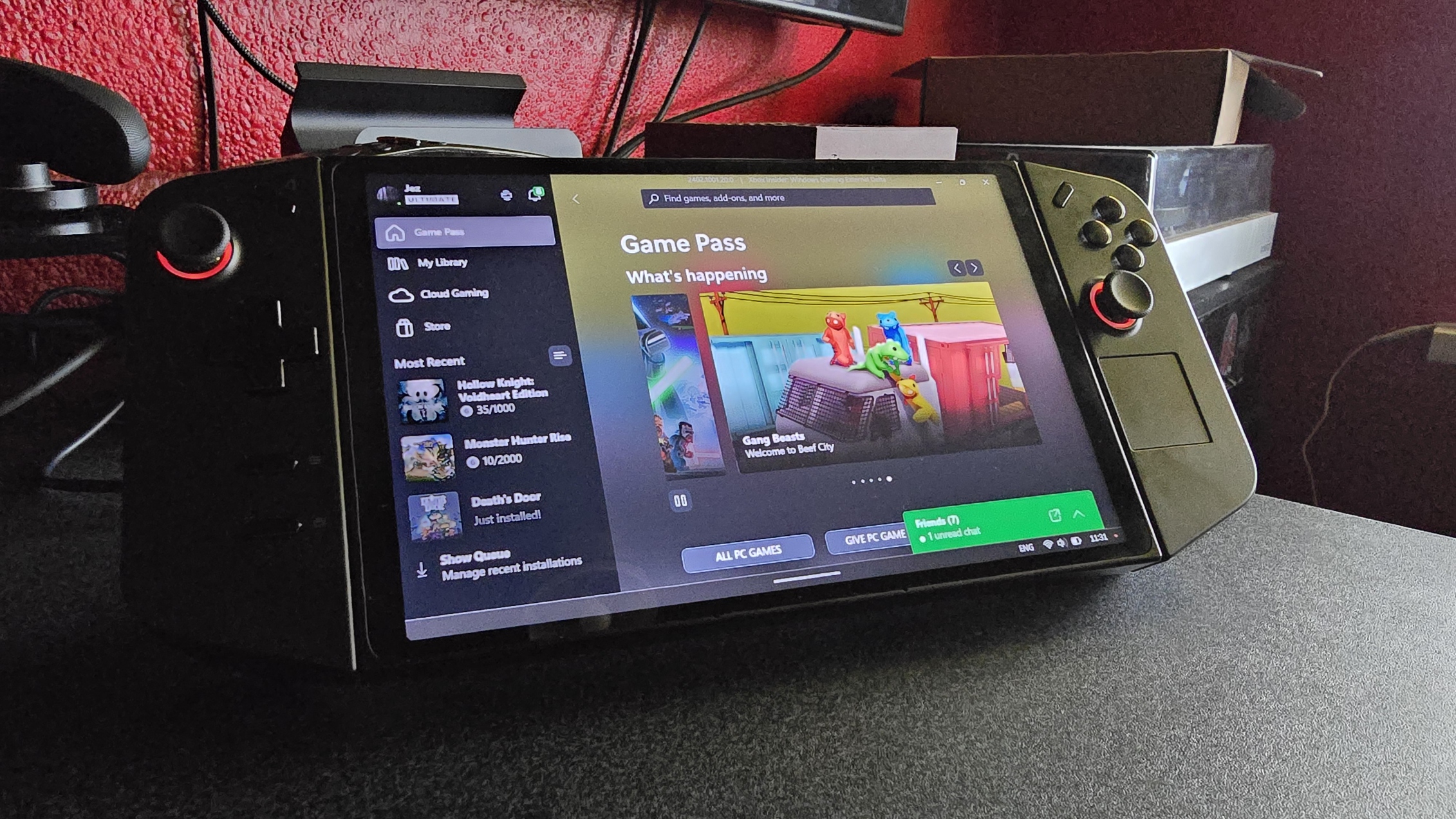
Price: $699.99
Processor: AMD Ryzen Z1 Extreme w/ integrated Radeon Graphics
OS: Windows 11 Home
RAM: 16GB
Storage: 512GB SSD or 1TB SSD (reviewed at)
Display: 8.8-inch 16:10 QHD (2560 x 1600) IPS touchscreen
Refresh rate: 144Hz
Ports: 2x USB-C 4.0 (DisplayPort 1.4, Power Delivery 3.0), 1x MicroSD card reader, 1x 3.5mm headphone jack
Battery: 2~ hours
Size: 1.60 x 5.16 x 11.76 inches
Weight: 1.88 lbs. (~0.854 kg)
The first thing really hit me as a Steam Deck and ASUS ROG Ally user is just how big and beefy the Lenovo Legion Go is. This is a whopping 8-inch, QHD+ 144Hz display, which beats the ASUS ROG Ally hands down on paper, until you realize it doesn't support VRR FreeSync. But for the types of games I find myself playing on devices like this, I'm not hugely concerned about the display tech, honestly. I tweak games down to medium settings, and restrict the display to 800p and 60Hz in order to boost battery life and portability — but if you plug it in, you can go turbo mode and get more out of that big, bombastic screen. But more on performance and battery life a little later.
Design-wise, I much prefer the Lenovo Legion Go to my ASUS ROG Ally overall. It looks more "professional" and subtle in its presentation, industrial even, as opposed to the white, angular design of the ASUS ROG Ally. Although I have to admit, as much as I prefer black tech, this thing is an absolute smudge magnet. I left the pictures in this article intentionally untouched so you could get an idea of just how smudgy this thing can get, and this is based on every day use with washed hands. If you fancied some Helldivers 2 while eating french fries or something, you may end up with more grease on the Legion Go than on your hands. It's not a huge deal to me, but if you're someone bothered by that sort of thing, it's worth being aware of (or keeping a cloth handy).
Indeed, these devices are designed to be held and touched. Where the Lenovo Legion Go one-ups competitors is with its mini trackpad. Everybody knows Windows 11 is terrible to use with touch controls, which is why Lenovo included the trackpad here. The downside is that when Windows thinks you're using a mouse, it also thinks you're using a keyboard. So if you click on a text field, you won't get an on-screen keyboard without calling it up manually.
We all know Windows 11 sucks for this kind of device, so I'm not going to go on about it too much. Xbox is taking the lead on improving the situation here, but for now, we'll just have to deal with the weirdness.
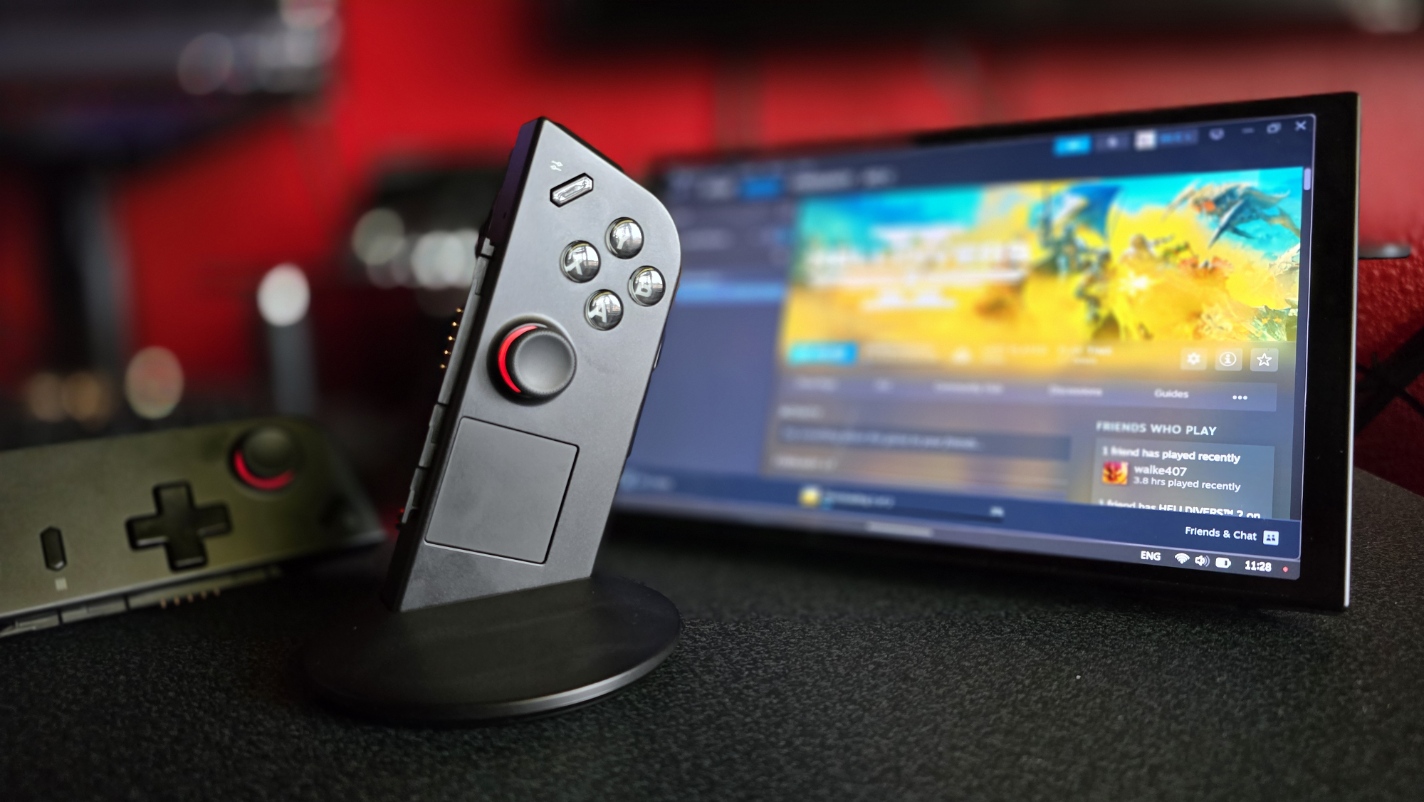
Some of the weirdness is intentional, though. See the above picture? Yep, the joysticks detach here like a Nintendo Switch, and in the included carry case, you can even dock one of the joysticks and use it as a joystick ... mouse, thing. It's surprisingly ergonomic to use the left joystick for movement and the right joymouse for aiming in shooters, although configuring the additional buttons and triggers to mimic a keyboard can be a chore. I honestly can't see myself using this very much, owing to the configuration chores required and, it doesn't sit that well in the provided housing. It's a nice touch that the little skirt fits snugly into the carrying case, though. There's a switch on the underside to turn the laser on and off if you're planning to use it that way, as well as a handy thumb scroll wheel. I could see myself using this more for productivity than gaming, to that end, providing you have a desk available Because aye, there is no desk included.
What is included, though, is a huge kickstand. This is something I've seen accessory manufacturers like JSAUX try to remedy with their various Steam Deck accessories and ASUS ROG Ally accessories, with mod cases and the like. Lenovo said "naw," and slapped it right on the chassis instead. This makes the Lenovo Legion Go an exceptional travel partner for plane and train tables, especially given how much more noticeably heavy it is compared to its competitors. All that beef is necessary for the larger display, but also the impressive cooling. Playing Helldivers 2 as high as I could in performance mode and fans on "smart" tuning, this thing stayed quite cool compared to other devices I've used in the category. The huge air vents across the back are doubtless something to do with that.
The Lenovo Legion Go software is similarly usable to the ASUS ROG Ally, making it relatively easy to update drivers and tweak RGB settings and things like that. Lenovo's app is a bit bulkier than ASUS' however, and doesn't load as quickly or responsively. ASUS has a few months of updates on Lenovo here, however, so hopefully Lenovo will match the pace of polish ASUS has earmarked.
Across long play sessions in games like Hollow Knight, Monster Hunter Rise, and God of War, I found myself thoroughly satisfied with the overall feel of the device. The triggers and joysticks feel great after tweaking their deadzones a bit, and the grips are comfortable across several hours of play. But how does it stack up while running games? Honestly, I found myself unable to discern significant performance differences from my ASUS ROG Ally, in practical terms.
Impressive performance and longevity (with tweaks)
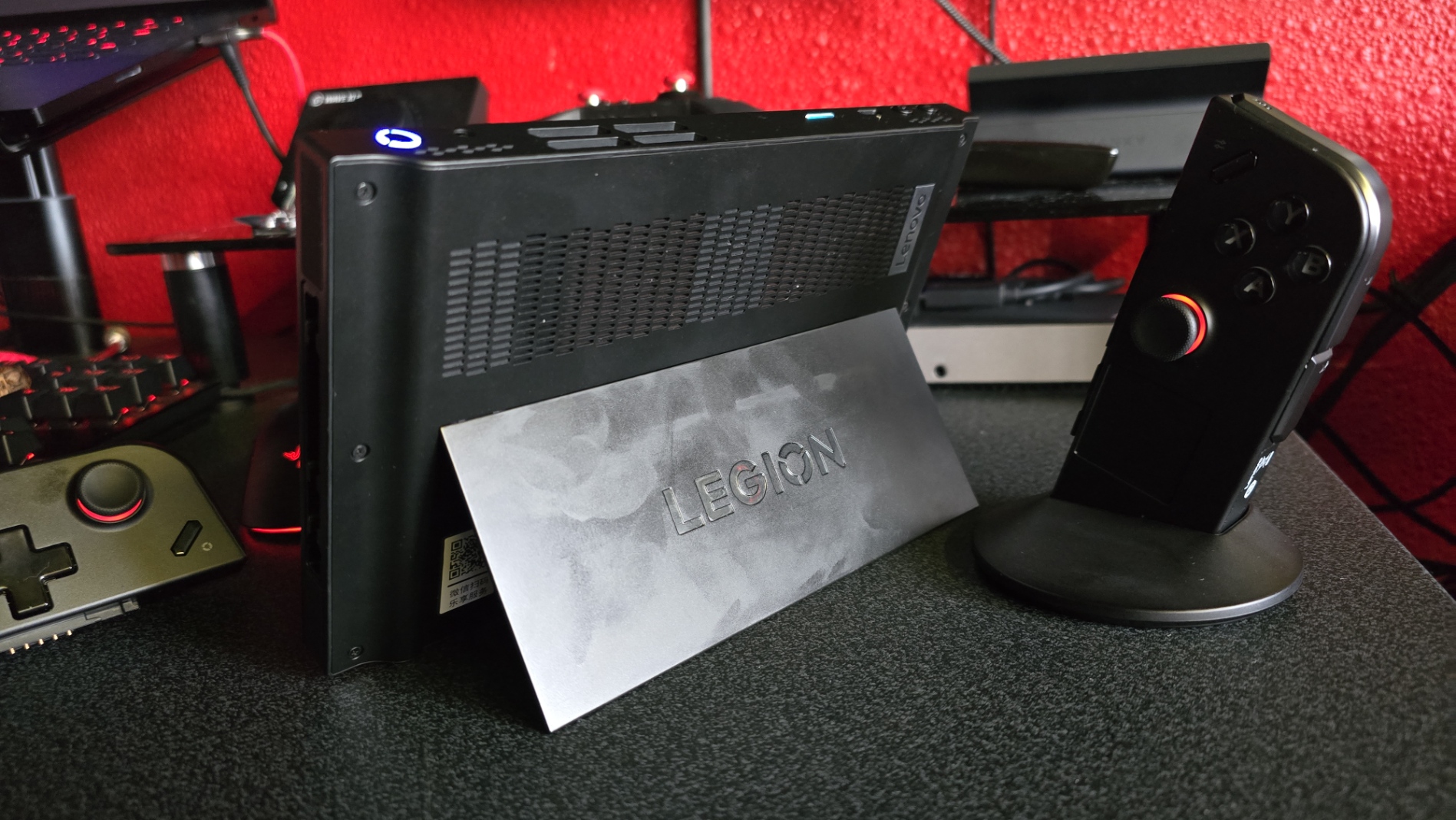
The Lenovo Legion Go and ASUS ROG Ally are largely similar when it comes to internals. Both use the AMD Z1E chip for their graphics processing, and just like on the ROG Ally in the early days, you can boost the VRAM using the BIOS. I tend to keep it on 6GB for those VRAM-thirsty titles. Hopefully Lenovo moves the ability to tweak this setting into its software like ASUS did, but it's not a big deal.
One big question I often get about these types of devices pertains to battery life. Of course, they're quite powerful devices pressed into a pint-sized package, and therein lies trade offs to be had. You can't get huge batteries into these things, and while you can do a lot of tweaks to reduce the draw on the battery, you're still only looking at around 3 hours at an absolute maximum. If you're driving this thing as hard as it can go, on turbo mode, fans at full tilt, max resolution, playing a game on ultra, etc. —
well, you're probably looking at like 30 minutes at most.
That's the thing with these types of devices, you really need to know what you're getting into. To get the most out of the ASUS ROG Ally or the Lenovo Legion Go, you need to be willing to tweak those settings regularly for your current situation. While on a train, I turned performance down, lowered the resolution, capped the frame rate to 60, set the OS on efficiency mode, and I was able to play 2D metroidvania Hollow Knight to make up my entire 2.5 hour train journey, with battery left to spare. You can change all those settings on the fly using the overlay menu, bound to a button next to the top right of the display by default. The Lenovo Legion Go can go harder than Hollow Knight, though.
It will always depend on the type of game you're trying to run, but games designed around "Gen-8" (as in Xbox One and PS4) run quite well on the Lenovo Legion Go and its Z1E contemporaries. To get games like God of War to 60 FPS you may need to compromise on some raw visual fidelity, and you'll also need to keep a power outlet or power bank handy if you plan to go for more than half an hour. But I find it's quite rare to be too far away from one these days, every train and plane I use generally has them, and a decent Lenovo Legion Go power bank can add an hour or two to proceedings if necessary. These are full PCs essentially, meaning you can also connect them to any compatible Lenovo Legion Go dock or ASUS ROG Ally dock, or indeed any USB-C expansion accessory like this Razer dock to get extra ports and even display-out support. I connect mine up to my TV when friends are over so we can co-op in games without split screen support.
I do find that the QHD+ display is perhaps a bit much for the Z1E if you try to play games at their native resolution. Machine learning upscaling techniques can help in some cases, of course, and improvements will always be coming down the pipeline. Overall, I'm impressed with what Lenovo has put together here from a performance and cooling perspective, and that voluminous display is exactly some games with tiny user interfaces and poor scaling need.
Over all, I'm incredibly impressed by the Lenovo Legion Go, and think it's absolutely worthy of a recommendation. Personally, I think the ASUS ROG Ally 7-inch 1080p display with VRR is definitely a better design choice than the Lenovo Legion Go offers, but there's so much about the Legion Go to love that it stops being a big deal. Either device will give you a great experience, in my view, and it'll generally boil down to which device's aesthetics you prefer, whether you want a kickstand baked in, and those detachable controllers. I have to say, for versatility, the Lenovo Legion Go definitely has an edge.
Handheld PC gaming is getting seriously exciting
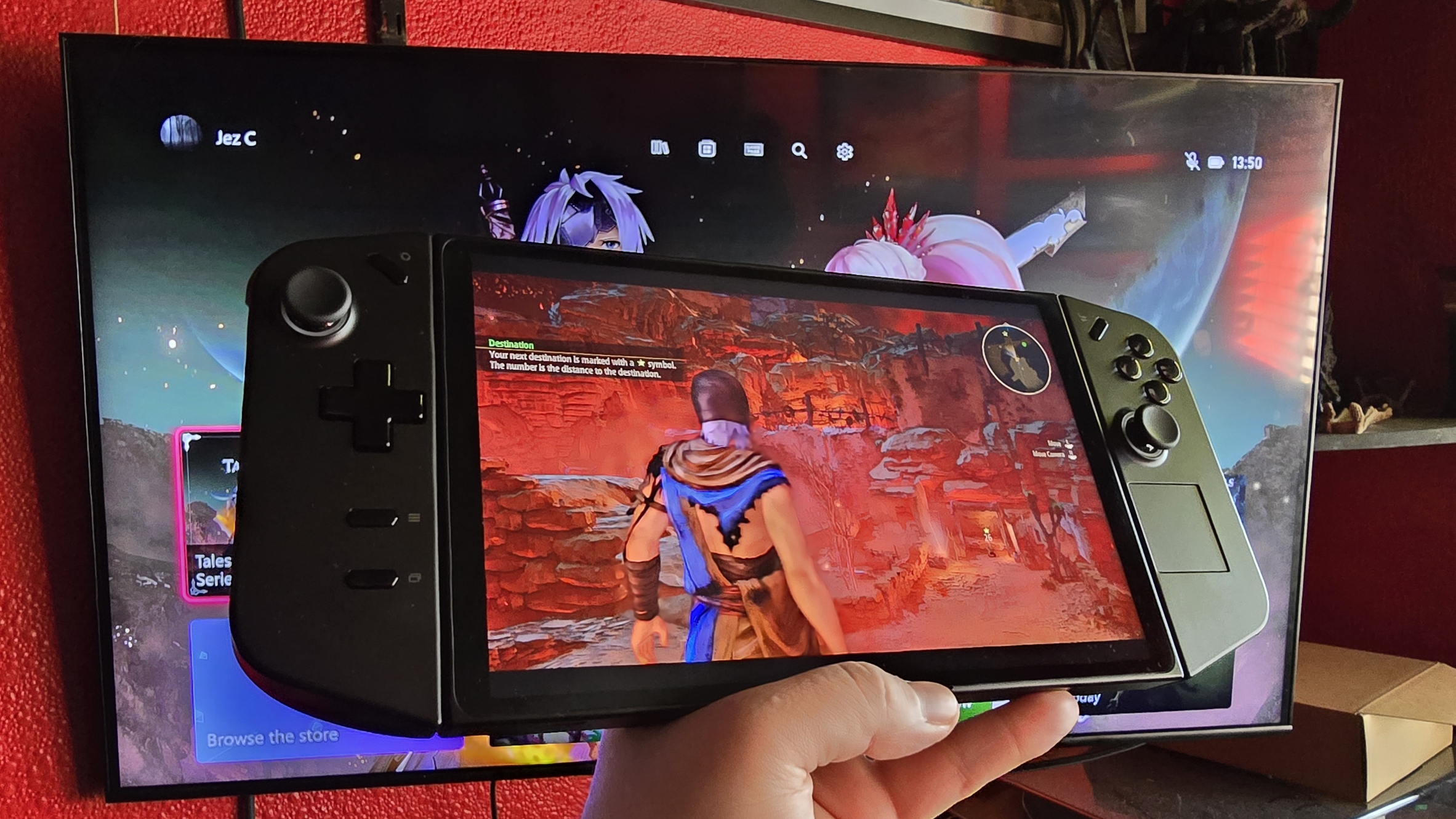
Whether you're rocking the user-friendly Steam Deck, the power-portable ASUS ROG Ally, or the adaptable adept Lenovo Legion Go, there's something for everyone in the current handheld gaming landscape. Rumors suggest that Xbox itself is making a handheld, with a PlayStation portable hot in pursuit. There's also the Nintendo Switch 2 on the horizon, and who knows if players like Dell, Razer, and others will jump into the PC handheld fray in the coming years.
Microsoft has a lot of work to do to improve the feel of Windows 11 within this category, but the backward compatibility and enduring versatility of Windows remains unbeatable. Free to use any store, any launcher, any service, Windows-based PC gaming handhelds are going to become increasingly important in the coming years, as prices come down and quality goes up.
I'll return in six months to let you know how I'm getting on with the Lenovo Legion Go for sure, but at least for now, I can very easily recommend it to anyone looking to take their Steam or PC Game Pass gaming on the go.







